Thankfully there are still vintage buildings such as the potting shed, the pavilion and ironwork benches dotted around the Camperdown Botanic Gardens. Great views also over lakes and distant volcanoes
My experience at the gardens
The views from Camperdown Botanic Gardens are quite magnificent. From their elevated position 5kms or so west of the town, you look down over the lakes below and the string of dormant volcanoes lining the horizon in the distance.
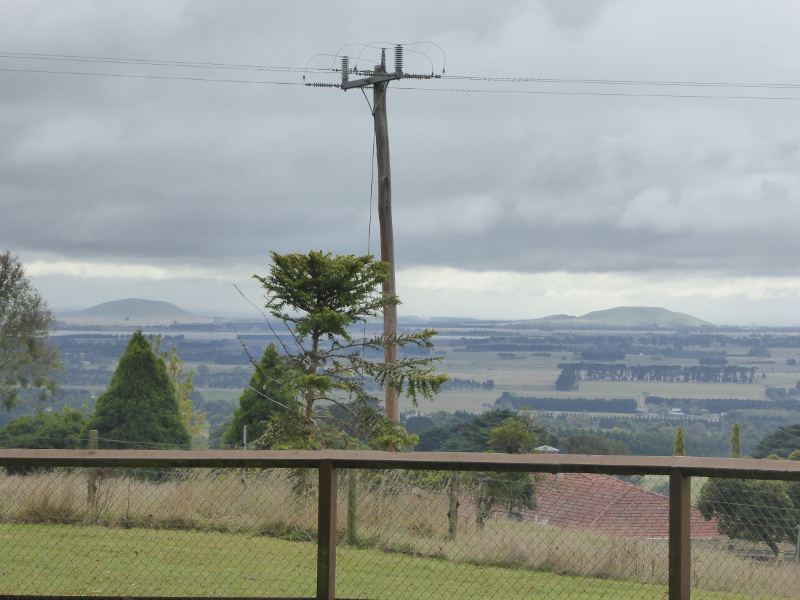
It’s not an easy place to get to, mind. It’d be a stiff walk up the hill from the town centre, and I wouldn’t even really fancy trying to cycle up there either. But it’s also difficult because it is tucked away behind a campsite, and the first time we tried to visit, we gave up after getting lost among tents, trailers, caravans on a busy holiday weekend.
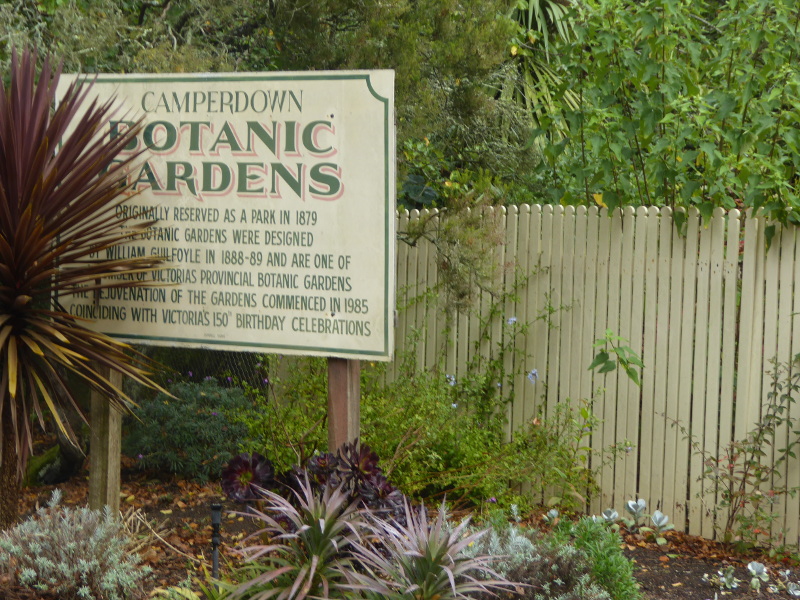
We didn’t even find the Gardens entrance that day, so I was very pleased to have the offer of help on my second attempt from Janet O’Hehir, a local horticulturalist who plays an active role in the Friends of the Gardens, and has a really busy Instagram page with regular delights from Camperdown Botanic Gardens.

We met by the beautiful entrance gates, a little bit easier to see on this grey, drizzly Sunday with only a couple of campers on-site, it seemed.
It’s then a short walk across to where the rotunda once stood.
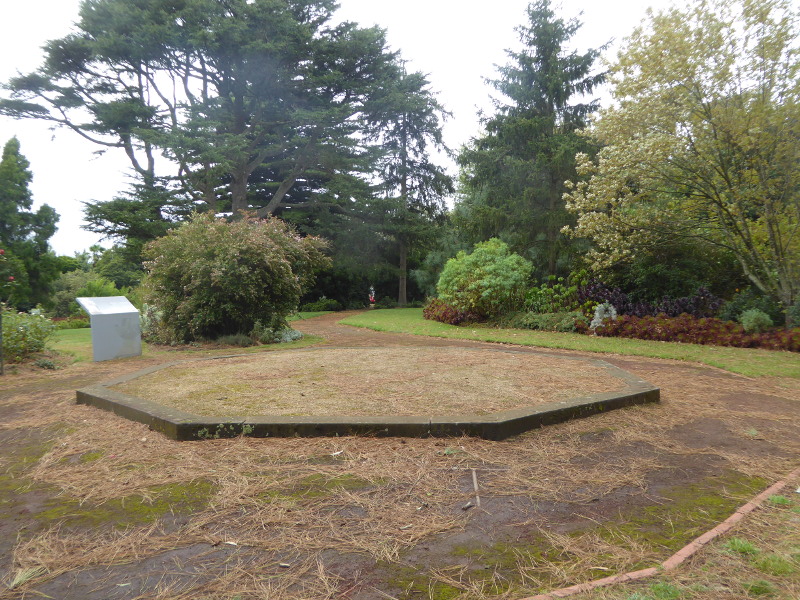
And here I was thankful of some local information, as I learned that the look-out tower from which journalists and other visitors used to marvel at those views, used to be attached to the rotunda, so when the rotunda left, so did the lookout.
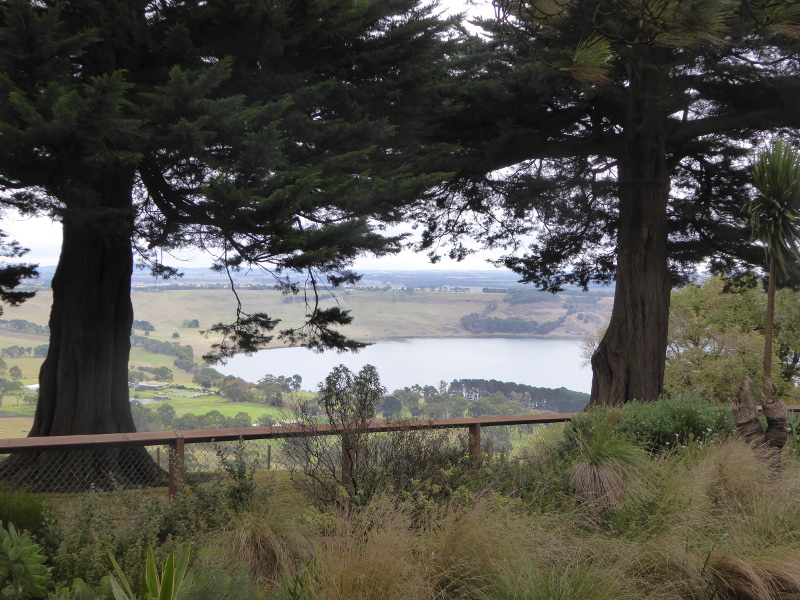
There are still a handful of vintage buildings and other structures inside the Gardens, though.
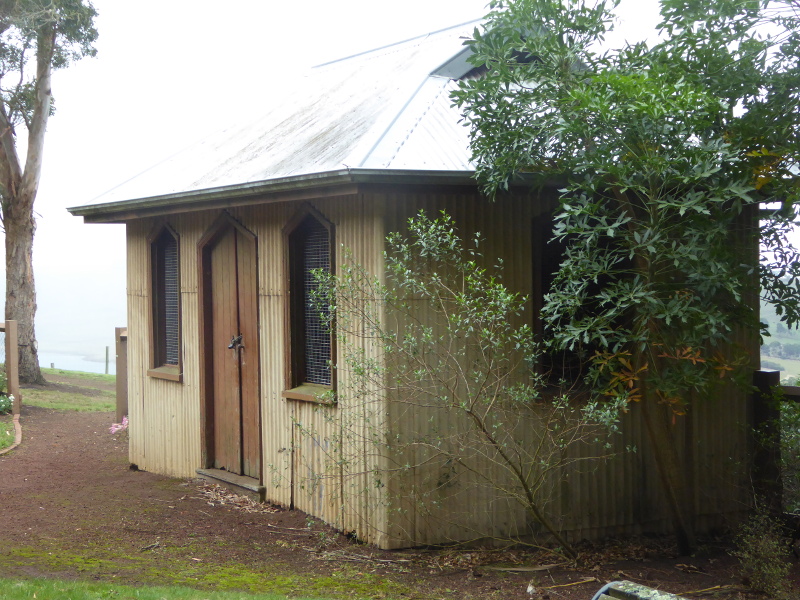
Janet took me inside this potting shed, which must have been standing here for over 100 years. It’s still used by the locals who look after the Gardens, with tools, mulch and other essentials still stored there.

And then the little pavilion, dating from the 1920s and designed by Warburton Perry Knights, is still functioning as a barbecue area. (He is also the designer used for the lovely Johnstone Arcade in nearby Terang).
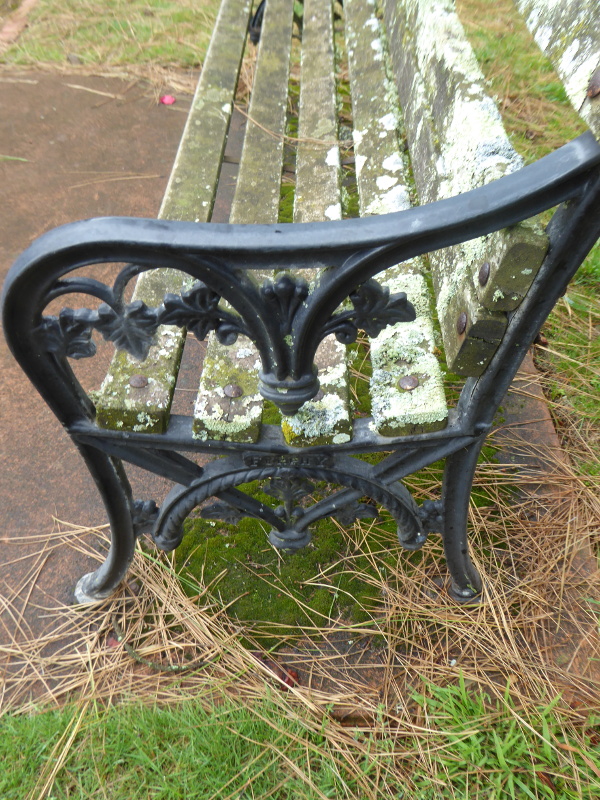
I also love the ironwork of old benches I find on Vintage Victoria. If anybody knows anymore about the designs of these benches in Camperdown Botanic Gardens and who made them, I’d love to hear from you.
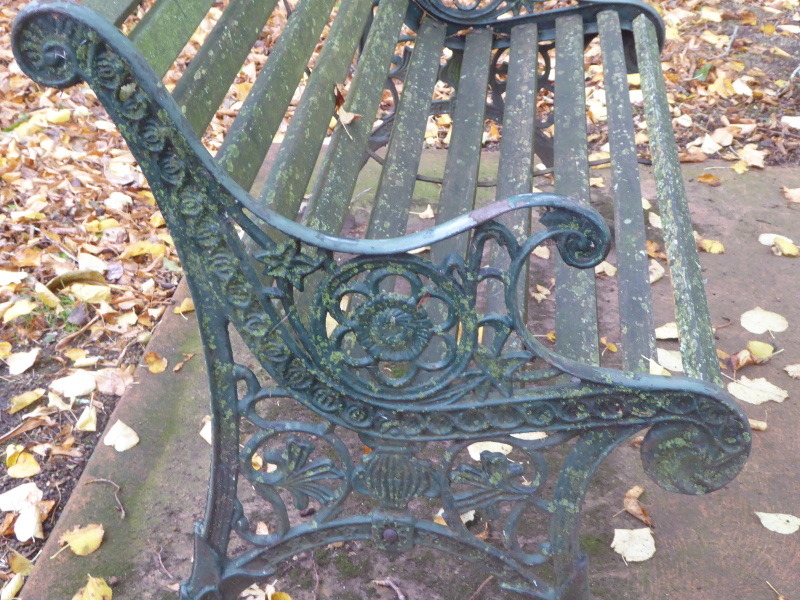
Now, I’m no horticulturalist, but this tour of Botanic Gardens in Victoria is certainly making me appreciate the utter beauty of trees that have been spreading their limbs up and around for some 160 years.
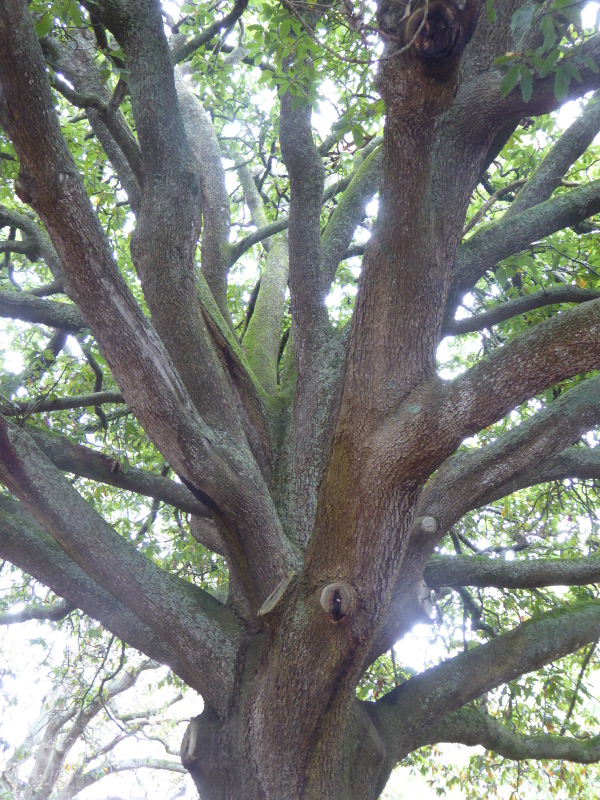
The barks, with their extraordinary patterns, developed slowly over decades, also fascinate me, rather in the same way an elderly person’s wrinkled face indicates that they have been through a lot and would have many stories to tell. These trees surely are the same.
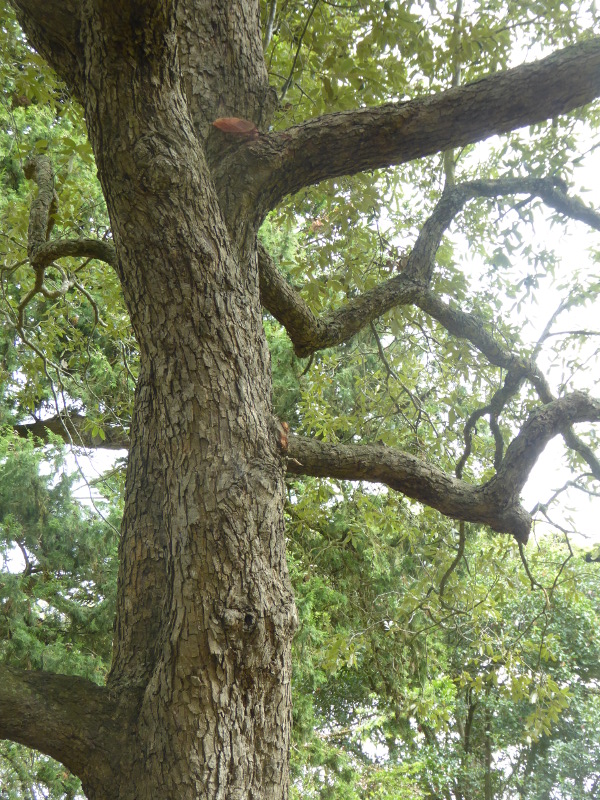
One of the tree highlights in Camperdown is the avenue of what I would call lime trees, but in Australia they seem to have the Germanic name of Linden Tree, and Janet used the Latin (and French) tilleuls.
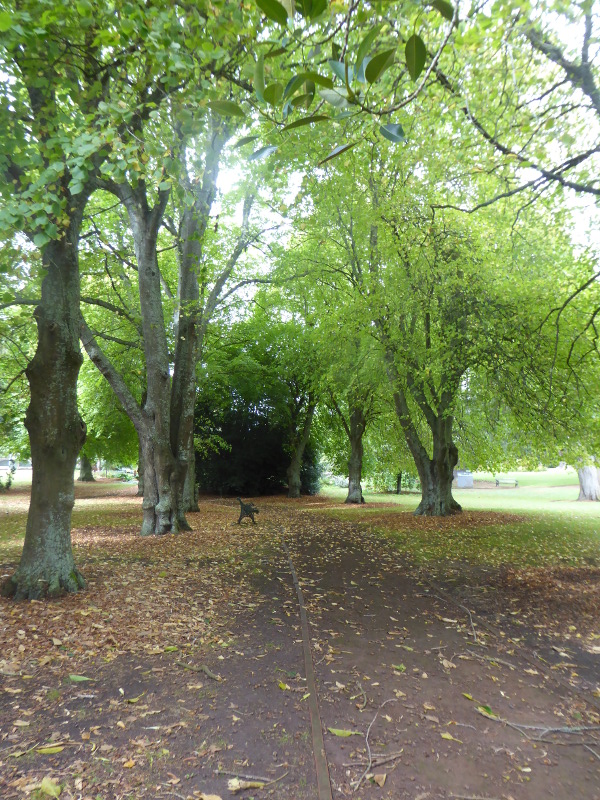
My home in Yorkshire was in an avenue lined with these trees, so seeing this branch, with its lime green leaves, reminded me of childhood summer days. (By the way, it’s probable that, unlike in Yorkshire, it’s common to have actual lime trees bearing the citrus fruit in Australia, which might explain why nobody uses the term ‘lime’ here so as not to cause confusion).
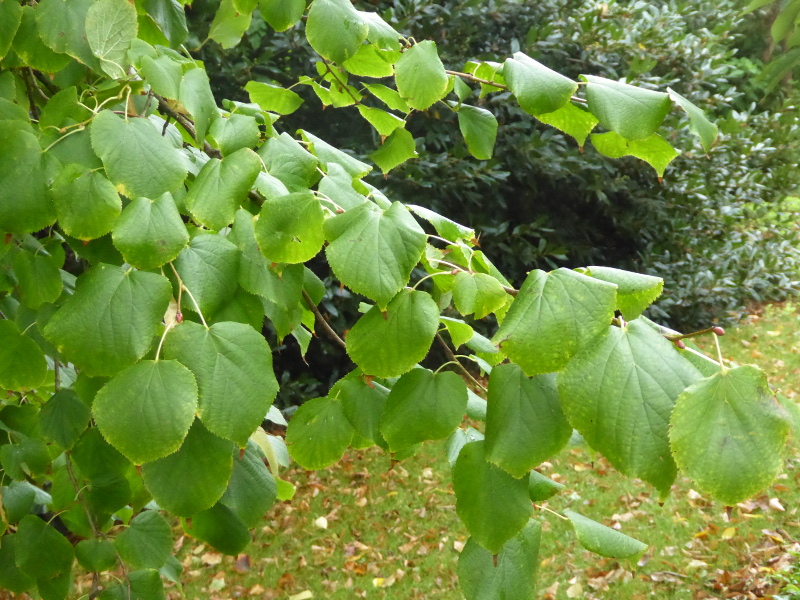
1950s instructions from the Council told the curator at the time that in reducing his hours, they wanted him to prioritise the lawns and trees rather than the flower beds. There are still some stunning beds, though I think maybe this is due to the work of the Friends group, including my guide for the day, Janet.
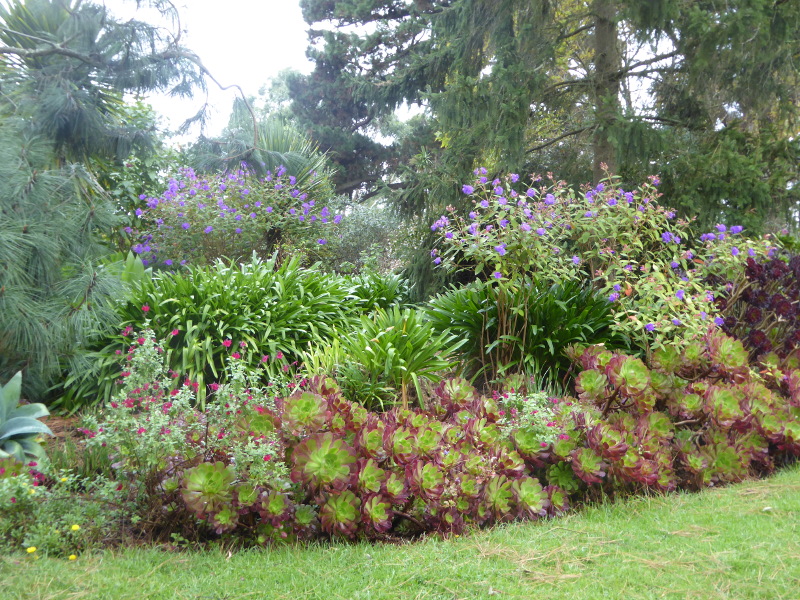
I loved how the current gardeners, like Janet, are creating little geographical sections to run alongside some of the trees that have stood for ages. There is a Canary Island Pine, so the bed nearby is full of plants that originate in the Canary Islands (similar climate, I guess?). There is the New Zealand section; and there are clusters of bushes like these hollyoaks, cultivated from parent plants in Castlemaine Botanic Gardens (I’ll have to look out for them).
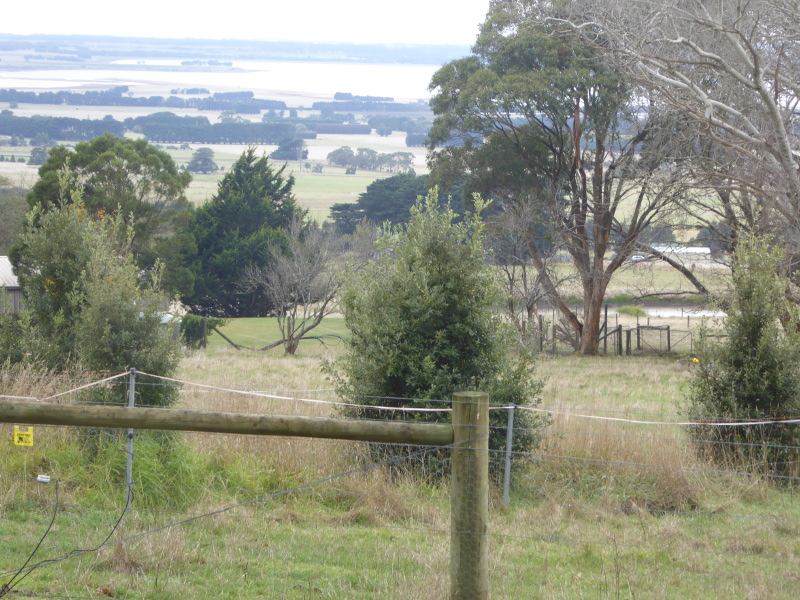
The hollyoaks are actually beyond today’s Botanic Gardens perimeter fence, but still within what was once the enormous 200 acre ‘Public Park’, and still a part of the official ‘Arboretum’.
I think Janet and her colleagues are keen to see the Arboretum develop, too, so who knows what we may find here in years to come.
The 25 hectares area fenced off as the Camperdown Botanic Gardens has Victorian Heritage status since 2012, so hopefully it will continue and flourish, as long as that caravan park doesn’t spill over as it did on that March holiday weekend (and as we saw also in Koroit Botanic Gardens).

The lakes down below are a draw in themselves; the one to the right as you look down from the Gardens is apparently very salty; the one to the left, freshwater; so apparently the fishing and, once upon a time, the proposed swimming enclosure, would presumably take place in that lake. Down there, also, is what some of the old news articles refer to as the ‘beach’ – I didn’t have time check that out this time, but I’d like to look back up at the Gardens some day, to see how they look from below.
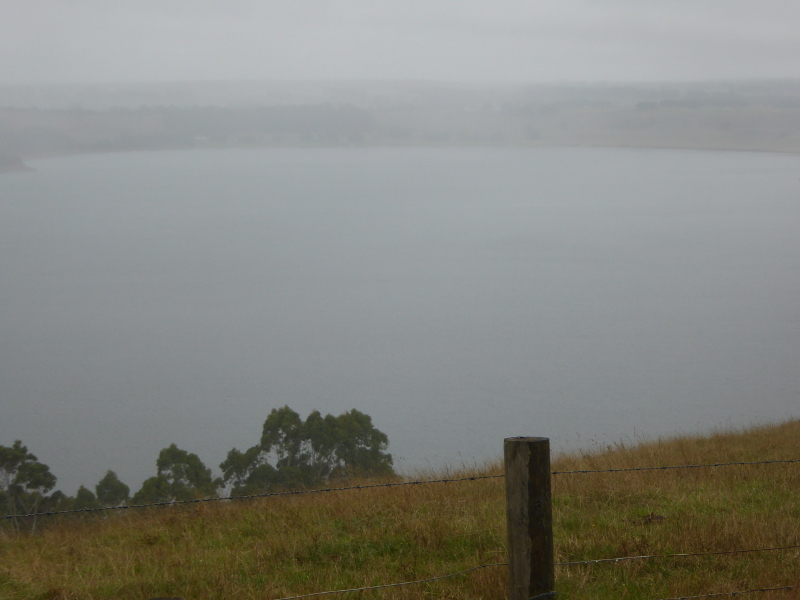
I’m just glad I got to them this time, and certainly enjoyed having the local knowledge from Janet to guide me through them. Another totally unique botanic gardens experience.
One last story before I finish this post…
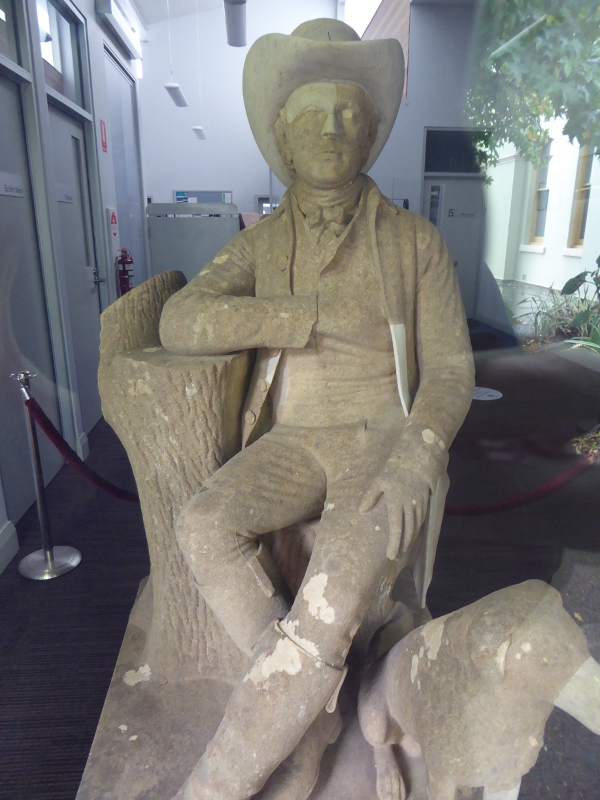
On my way through Camperdown town itself, I spotted signposts for the Burns Statue, and found him sitting there (patched up after the vandalism that caused him to be removed from the Botanic Gardens) behind a pane of glass (perhaps to protect him further vandalism?).
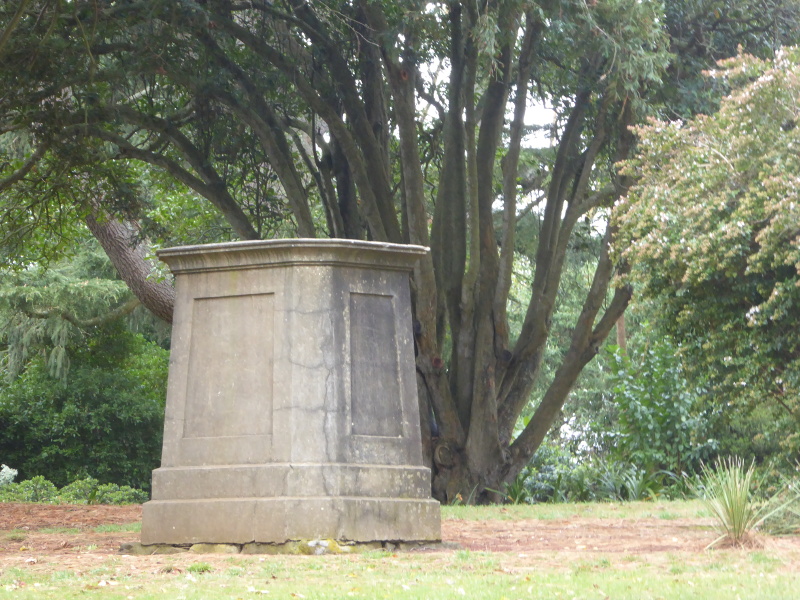
It is remarkable how many settling Scots in 19th century Victoria commissioned statues of Robbie Burns (Ballarat, Melbourne, are there others?). It’s a shame really that the plinth in the Gardens remains unoccupied in 2021.
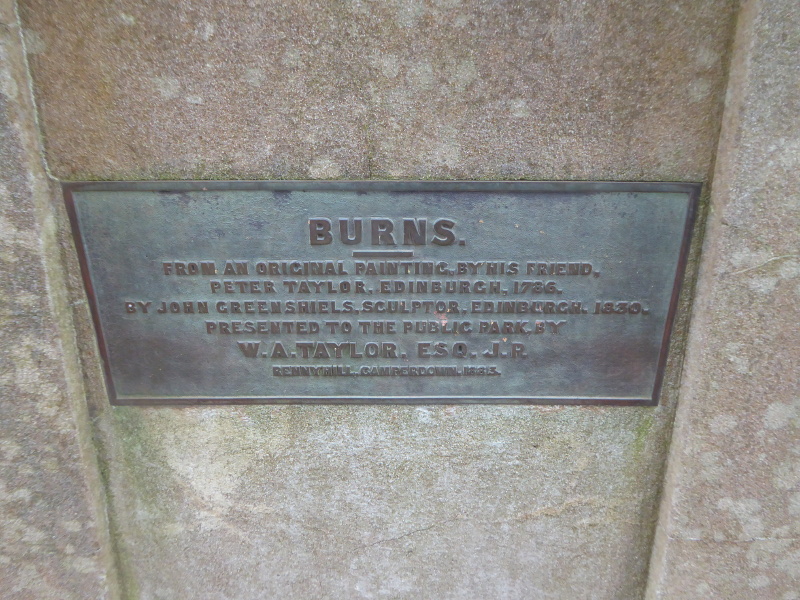
Practicalities
The Camperdown Botanic Gardens are actually about 5 or 6 kms from the centre of the town, so it’s not a place you’ll stroll to from town; you’d need to be pretty fit even to cycle here as it’s uphill all the way.
As far as I could see, the only toilets are situated in what is now the caravan park next to the gardens, but outside their official entrance gate.
History and stories
Trove didn’t provide many articles referring to the Camperdown Botanic Gardens so stories were hard to come by.
I actually turned first to the Victorian Heritage Database entry, which gave a hint on one of my problems searching for an exact match of words: the area was initially called Camperdown Public Park (interestingly, the VHD has the reserve created in 1869, as distinct from the Gardens’ own board, which refers to 1879.
According to the VHD, by 1874, 300 trees had been planted. But it sounds as if 1879 was a key date, also, as it was then that the rotunda was installed. According to one article I read, that rotunda had to make way for the caravan park in 1960, though I’m told moves are afoot to replace it some time soon.
I did find a Trove article advertising for a park caretaker in 1881. ‘He’ had to be married (I wonder why), and needed to be living on the park premises, so no loners or widowers welcome, it seemed.
By that year, the Gate lodge had been built (1880), though the verandah was only added in 1887. The building still stands, as the caretaker’s office for the caravan park (sorry, no photo – it didn’t look its best in its current state and position, I felt).
In 1888 the curator of Melbourne Botanic Gardens, Mr William Guilfoyle, was invited over to Camperdown so that he could advise on the best way to develop what was still then called the Public Park.
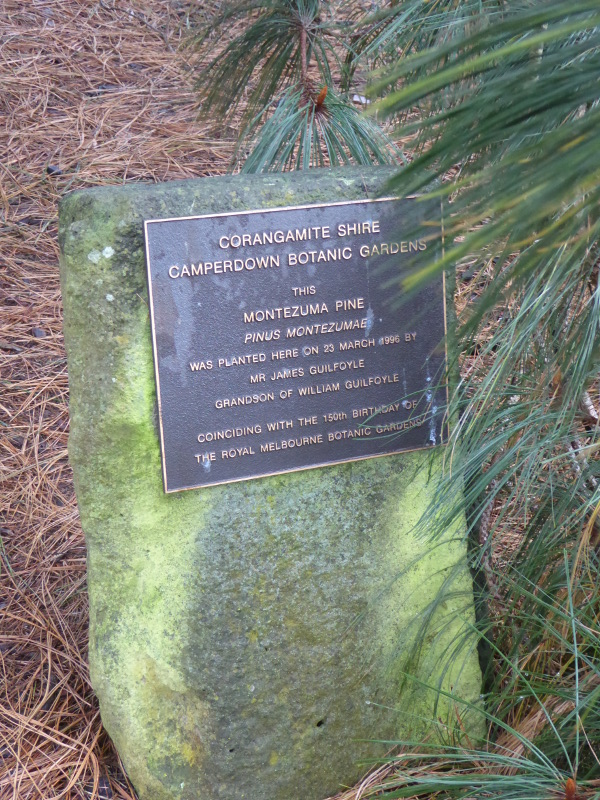
I rather liked that the Gardens today mark the influence of Guilfoyle, with this plaque explaining that Guilfoyle’s grandson planted a Montezuma Pine in the Gardens to mark the 150th anniversary of Melbourne’s Gardens, where Guilfoyle had been based.
Henry Fuller was curator from the time of that 1881 advert for the job until his sudden death at the age of 54 in 1901. That was a long stint, in which he had six kids. And unless I’m mistaken, his offspring continued to manage the gardens until at least 1946. I wonder if any Fullers are still around today to tell any tales of Gardens life?
In 1908 the council had plans to build picnic huts, one by the (new) entrance gates, one overlooking the lake, and another near to where public baths were planned in the lake itself ‘opposite the pine plantation’.
In 1930 an aviary, fish pond and glass house were introduced– all being removed later.
A 1935 article in the local newspaper still referred to the Public Park rather than Botanic Gardens, but still waxed lyrical about the ‘green lawns, shady trees and magnificent vista.’
The key debate in turning the ‘Gardens’ slowly into a camping ground appears to have taken place in February 1939, when discussions were had locally over where to establish a new camping ground. Some suggested the Camperdown showgrounds, but the Council opted for the Public Park, ie Botanic Gardens. The Chronicle reported that the decision was taken without even any discussion in the full Council meeting, so not everybody concurred, it seems.
A 1939 piece admired the fish pond, the aviary and the lookout tower, with its spiral staircase to reach the top, from which ‘a panorama spread before them that would be hard to beat.’ There was a chain of lakes (some salt, some fresh) and a ring of volcanoes to be seen. And there was reference to the Robert Burns statue, also now gone: “Bobbie Burns and his dog occupy a central spot in a resort of which Camperdown should indeed be proud.”
A bad omen for the future of the Gardens in September 1945. Vandals tore weatherboard off sheds, fired bullet holes into water tanks, and smashed 24 windows at the ‘beach kiosk’.
By 1948, the issue of water supply became the headline. If the camping area was to be developed the park needed piped water, but with the elevation of the Park and the distance from a water source, that would mean an expensive mile of piping needed. Even the Gardens curator observed that his efforts could only go so far without a better supply of water. Even the local schools, most of which held their annual picnics in the grounds, had to arrange for water to be carted up to the Park for the picnic to go ahead successfully.
In 1950, an open-air concert attended by 2000 people was held in the Gardens. The orchestra played in the band rotunda which was still in place at that time. People picnicked and spread out over the lawns.
By 1951, financial concerns led the management committee to move the curator to a part-time role (I wonder if he still had to be married and to live on-site?), with his priority to be the lawns rather than flower beds…
Cr Greene in 1954 felt that the camping ground proposed just outside town, near the Lake and the Botanic Gardens would never attract many campers as it was too far from the town centre and way too far from the beach. Well it was so busy on the Labor Day holiday weekend that we couldn’t even park our car up to try and find the Botanic Gardens…
The very last Trove article on Camperdown’s Botanic Gardens (always referred to in the local Chronicle paper as the Public Park) concerned the decision at the end of 1954 to hand over management of the grounds to the local Council.
I wonder how things developed over the following 66 years?
What are your experiences at Camperdown Botanic Gardens?
Does anyone just have a good memory they’d like to share about a visit to Camperdown Botanic, even from the last few months or years?
Does anybody know if any Fullers are still around, whose relatives managed the Gardens till just after the War?
Does anyone know anything about who designed and forged the ironwork on those vintage benches I picture in the post here?
Can anyone fill in with any stories about things that happened in or around Camperdown Botanic Gardens to bring my history section beyond my last story from the Trove database (1954)?
Other links and writings on the Camperdown Botanic Gardens
Here is a link to the Victorian Heritage Database entry on Camperdown Botanic Gardens.
The Weekend Notes entry dates from March 2020, so has more flowers in bloom than for my visit. Also has a photo of Robert Burns in place on his plinth…
The Talking Plants blogger was here in 2013 to plant a tree.
It’s thanks to this February 2021 article in the Camperdown Chronicle that I managed to track down Janet O’Hehir before my own visit.
The Sydney Morning Herald took an interest in Camperdown Botanic Gardens in 2015.
I’m not sure when this was published but I loved the design concepts of the Melbourne Uni students to revitalise the botanic gardens.

